When it comes to electric vehicle sales, it seems that no one can touch Tesla. In the first quarter of 2022, Tesla is outselling its closest rival, China’s BYD, by more than 2:1. In precise numbers, Tesla has sold 310,048 units, up 68 percent on Q1 2021, and BYD has sold 143,224, up 271 percent on Q1 2021.
Tesla is also outdoing its main rival, Volkswagen Group, who were consistently in the number 2 slot through 2021, though still far behind Tesla, and even falling behind BYD in Q1 2022 with just 99,100 units sold (still up 65.2 percent compared to Q1 2021).
Okay, these numbers all seem to be fantastic, and clearly show that Tesla remains the “King” of the EV brands, but they still appear to be in conflict with other news that has been continually emerging from Tesla buyers since at least 2018. What we’re talking about here are the reported problems with build quality, and in particular an issue with glaring body panel gaps. It seems that there has been some correlation between Tesla stepping up their production to meet rapidly growing demand for their vehicles, and a failure of Tesla to maintain basic quality standards.
In today’s blog, we want to take a closer look at this issue of body panel gaps, how serious it is, what Tesla appears to be doing about it, and what Tesla buyers can do about it should they find themselves in this situation.
Background: What’s the Problem? What “Panel Gap” Issues Are Tesla Owners Seeing?
When we refer to “panel gaps,” we are referring to the apparent unevenness of gaps that one would find between different body panels on the Tesla (as TechChris’ useful video highlights):
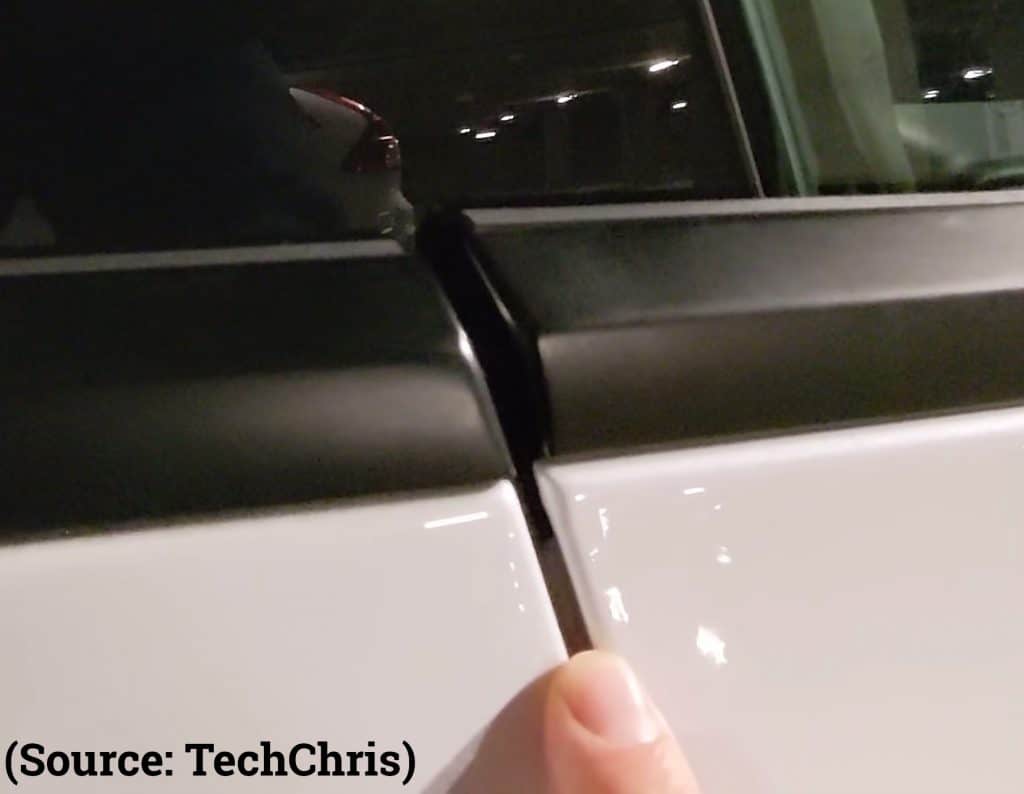
Common examples can be found between door panels and side body panels, as well as between the edge of the trunk lid and the rear panels. It looks a bit like when you go to snap a Tupperware lid back in place, but one corner is slightly lifted up and thus you don’t get an even seal.
The problem started to be reported in earnest back in 2018 when the 2017 Model 3 was being produced en masse. It was back then when Tesla’s sales were starting to far outstrip their production, and the problem of waiting times was getting serious. Despite their best efforts, however, the problem seems to be persisting, even in their “hand-built” prototype models.
When the long-awaited Cybertruck prototype was revealed at Cyber Rodeo in April, 2022, it was instantly mocked for its gaping panel gaps. This prompted many on social media to remark how this Cybertruck prototype was actually quite convincing as a real and “up to specification” Tesla model, as proven by its characteristic build quality problems.
The Internet abounds with angry forum posts, Quora questions, and YouTube videos from disgruntled customers who waited so long for their new Tesla only to find that it looked as though it had been assembled by a visually impaired chimpanzee.
That feeling of disappointment and annoyance was amplified by the fact that most buyers had paid over the odds to buy this Tesla as opposed to a top-of-the-line Toyota Camry, which probably still would have been cheaper. In fact, when we’re talking about the price of cars like the Tesla Model X, even buying a fantastic Ford Mustang would be cheaper.
How Serious Is Tesla’s Body Panel Gap Problem?
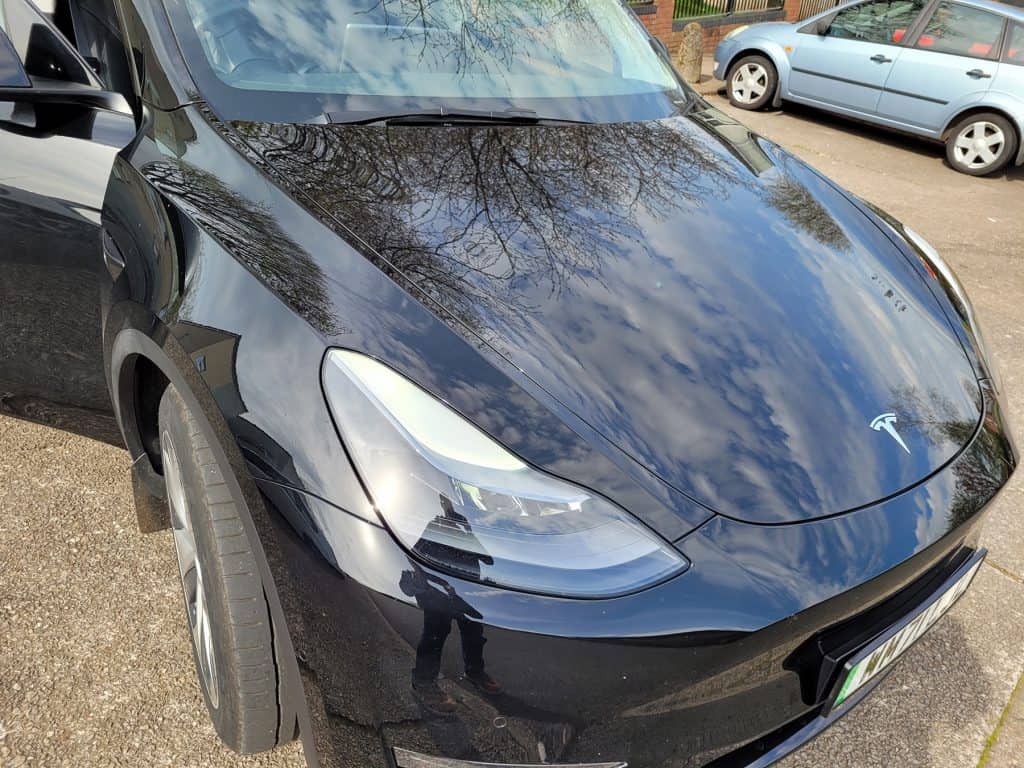
So far in 2022, Tesla’s reputation has been continuously tested as the company became the subject of multiple recalls for thousands of their cars. However, body panel gaps have never been the subject of one of these recalls. Why? It’s because while these body panel gaps are definitely a sign of poor craftsmanship, and they’re extremely disappointing for buyers, visually speaking, they are not a safety issue that warrants a recall.
There has been very few cases of doors, trunks or frunks actually being impossible to open (although naturally, this is something that Tesla would fix under warranty if so) – this is mainly an aesthetic problem.
Side note: Tesla’s glove compartment is, however, difficult if not impossible to open – when you don’t have power. So Tesla do have form here. It’s just that in this case, opening the trunk and frunk usually works without issue.
Prosecution – Exhibit A: The Infamous J.D. Power Report
One of the big things that fueled discussion over the body panel gaps and general quality issues was the 2020 U.S. Initial Quality Study from J.D. Power. This study ranked car brands according to the number of problems discovered upon delivery — i.e. related to production quality or craftsmanship, etc. — per 100 vehicles. Top of the list with 136 problems reported per 100 vehicles was Dodge. Unfortunately, Tesla appeared all the way at the bottom, with 250 problems reported per 100 vehicles. The industry average is 166 problems.
Defense – Exhibit A: Electrek.co Article
In a piece discussing the same J.D. Power report in 2020 on electrek.co, writer Bradley Berman defended Tesla and the implications of the report by pointing out:
“Tesla’s quality issues are primarily with cosmetic items, such as paint imperfections, poorly fitting body panels, and squeaks and rattles – rather than core powertrain or infotainment functions.”
Bradley Berman, Electrek
Defense – Exhibit B: Explanatory Quote from J.D. Power
Furthermore, in the same article, it was revealed that Doug Betts, the president of J.D. Power’s automotive division, said when speaking to CNBC:
“These are primarily a result of factory quality. Also, in the area of electric vehicle issues, they do have complaints related to range lower than expected; range gauge is inaccurate.”
Doug Betts, President, JD Powers
What he means there, in simple terms, is that while the number of complaints does seem high, the range and scope of the complaints were limited to a very small number of things, and in fact even this small range of things only pertained to cosmetic and relatively minor issues.
Conclusion – It’s a Real Problem, But Not Serious
First and foremost, it should absolutely be acknowledged that this is a real problem that Tesla is facing, and that customers’ complaints about body panel gaps are justified. It is fair for customers buying something marketed as a premium product to receive something that meets or exceeds their most basic ideas of what makes good quality.
To give a concrete example, there’s simply too many quality issues on TechChris’ Model 3 (in my opinion):
Indeed some of the recorded cases of gaps are laughable, but perhaps none so much as the Cybertruck prototype which presumably the company has had time to really slave over and perfect. It’s a reflection of real problems in the Tesla factories that need to be addressed.
However, we should also conclude that these problems are not serious (from a safety perspective), and not just because J.D. Power has said so. Body panel gaps fall under the “cosmetic” problem umbrella, none of which forced any kind of recall of safety or other roadworthiness issues. Recalls in 2022 have included:
- Jan 27 – 54,000 units recalled because of “rolling stops” problem
- Feb 01 – 817,000 units recalled because seat belt fasten reminder alert not sounding
- Feb 04 – 580,000 units recalled over problems with “Novelty Boombox” software
- Feb 08 – 27,000 units recalled over issues with software affecting windshield defrosting
These are just the ones for 2022 so far, and not including previous recalls in 2021. So, Tesla is dealing with recalls quite frequently, but clearly the body panel gap issue has not yet been the cause of one. That being said, it’s reasonable to assume that the body panel quality issue is not one of safety, which at least means the cars are always roadworthy.
Let’s not forget that the Model 3 has been called the most reliable sedan on the road in recent years, so clearly there are greater forces at work here that trump the cosmetic issues of body panels.
Related Reading: My Tesla’s Air Conditioning is Weak or Not Working!
Why Are These Panel Gaps Occurring?
Let’s reflect for a moment on why these issues are even happening.
Ramping Up Production
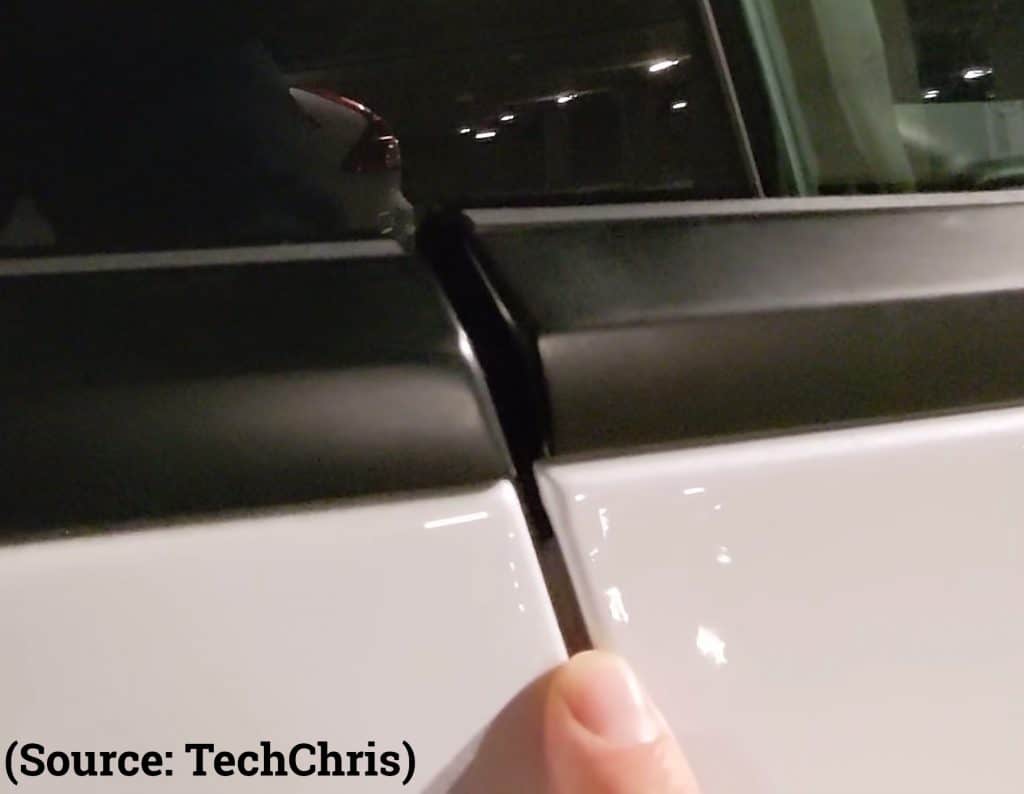
Chief among the reasons for body panel gaps is Tesla’s own meteoric rise in the world of electric vehicles. Tesla is in an interesting position in the world because it’s one of the relatively few firms that are starting out by producing and selling electric vehicles from the start. Most electric cars on the road today, including those from Tesla’s big international rivals VW and BYD, are made by OEMs who were already very well established in the marketplace.
VW has production facilities worldwide, and therefore creating the infrastructure to create its EV production capacity has been relatively simple compared to companies like Tesla who have had to build everything from scratch. A sudden skyrocketing demand for vehicles like the Model 3 and Model S have seen Tesla struggling to adjust.
We’ve seen them taking steps to try and streamline their process, such as eliminating half the color options, and charging extra money for available colors other than white. Such a move may make Tesla’s more monochrome, but at least it helps (hopefully and eventually) shorten the delivery times and keep customers happy.
Ramping up production means that factory processes get updated, and as they do, things do fall through the cracks…or in this case, things do fall through the body panel gaps!
Big Budget Range
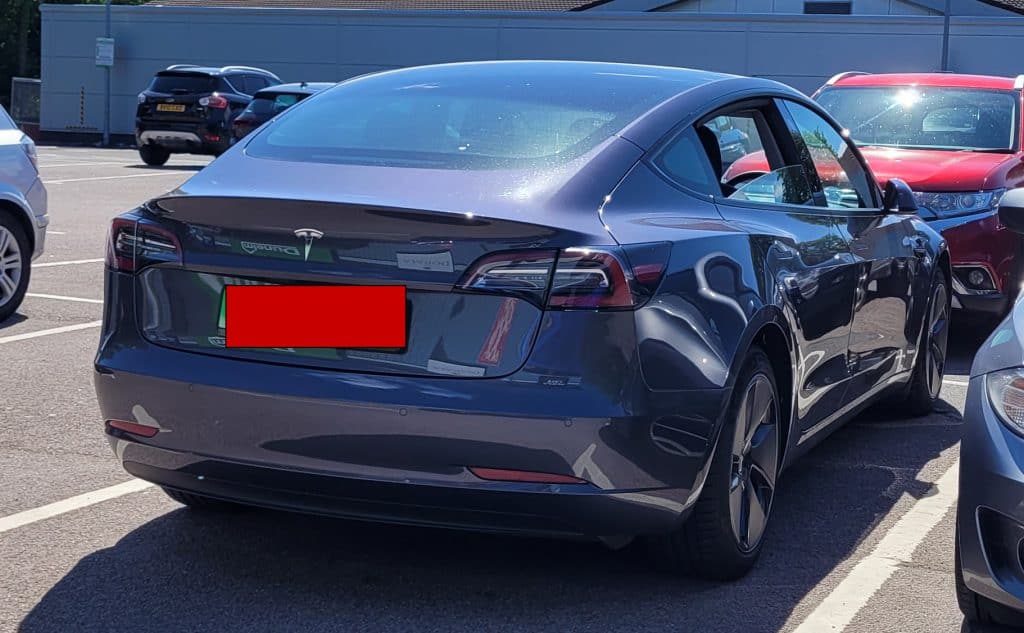
Another factor behind the problems, and a reason why a lot of the focus in the discussion has been on the Model 3 is that the sheer volume and range of Model 3 vehicles being made is so much greater than the others.
Companies like Porsche are only manufacturing their Taycan, a model that starts at $86,700. The Model 3 has enjoyed prices as low as $35,000. Where Porsche has the time to craft and check, Tesla has been somewhat deprived of that ability as they stretch all resources to the max to get everything done.
Is This Issue Unique to Tesla?
On the scale that we have been discussing, this problem is arguably “unique” to Tesla. Of course, problems can and do happen on other EVs and vehicles. A look around online can turn up all kinds of disgruntled customers, like one Reddit user who complained that he has had the panel gaps on his VW ID.4 trunk “fixed” twice without them actually being fixed.
Production problems like this are always possible, but as we mentioned earlier it seems to happen to Tesla more than others at the moment, most likely because of their ongoing struggle to adapt to large numbers of orders, and their ongoing journey to expand capacity and streamline processes.
What Should You Do About Panel Gaps?
Reporting the Issue to Tesla
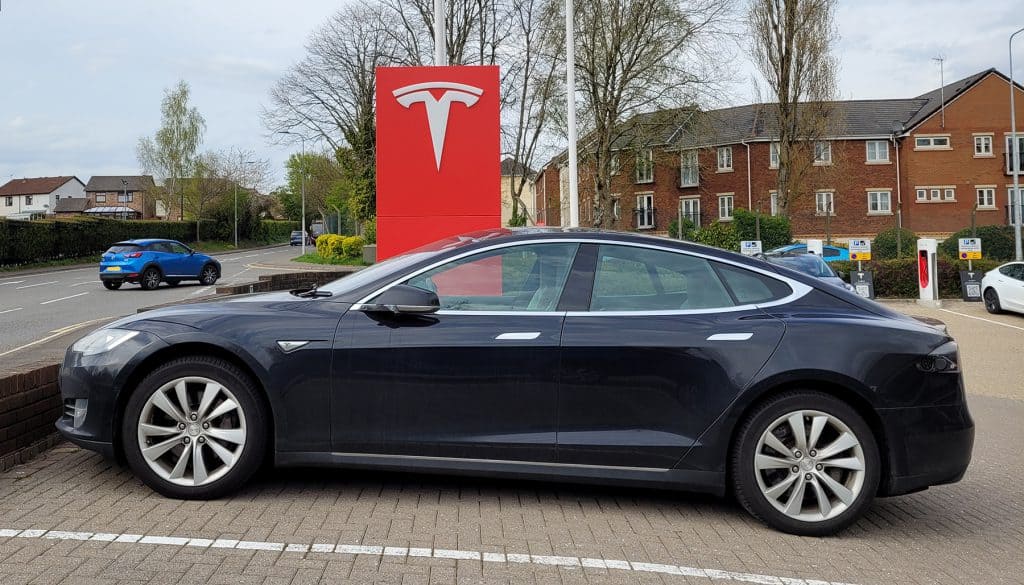
The most natural response one could have to such an issue is to report it to Tesla and get them to fix it. Interestingly, though, there are a lot of people online who seem to recommend NOT getting Tesla to fix it, because it can actually make things a lot worse.
One user on Reddit tells the story of how their sales advisor told them that any issues they spotted within the first 100 miles that were “not within spec” could be reported and freely repaired. They proceeded to report the panel gaps and had them fixed. The result? The technicians who worked on the car had scuffed the paint as they worked, and the finished work created lots of extra wind noise at the rear of the vehicle.
In response to this case, another user said that their own sales advisor had been more “honest” about it, saying that “…I strongly urge you not to try and get them fixed. Oftentimes, they fix them but then other gaps become more noticeable since things have shifted.” So what’s an owner to do?
Our advice is to only have them fixed if they seem to present some kind of real issue to your driving. It has been pointed out by experts and others, too, that these kinds of panel gaps, while not looking the best, are only cosmetic issues that don’t affect the general performance of the vehicle, and have no bearing on the quality of the digital technology or powertrain.
DIY Fixes
Model 3 and Model Y owners have found that there are certain panels such as the trunk — a common area of complaint — that can be fixed with some careful DIY proceedings. According to driveteslacanada.ca, certain users noticed that on opening the trunk one can find six small pads that can be adjusted to raise or lower the panels. It’s a specific fix, but could help a lot of Model 3 and Model Y owners who are facing the same gap problem.
Will This Problem Get Better In the Future?
Even back in 2018, Tesla claimed that it was making great strides of progress in addressing the issue. However, the continuing stories and reports of panel gaps into 2022 tells a different story, as does the rather disastrous unveiling of the Cybertruck prototype. The fact is that a lot of Tesla users are currently getting used to the idea that the Tesla car they’ve been waiting months for might well come with some degree of body panel gap problems.
We expect that in the short term this will more than likely remain a problem that Tesla continues to contend with while it continues to work on its processes and expand its capacity. Given the strength of the brand, however, and the many great strides they’ve made technologically that continue to impress customers and potential buyers around the world, it’s hard to say that such a problem could ever spell the end of Tesla.
It’s one of those things that will likely be fixed by data. While they may not discuss it much publicly, it’s more than likely that Tesla maintains a thorough record of all these reported problems, and is looking closely at the data they are gathering on the subject. Based on what they find, they can start to work to eliminate the most serious problems through quality control, eventually filtering that down through the range.
With VW and BYD trying to eat away at Tesla’s market lead, the company doesn’t have a great deal of time to really get to grips with this problem and properly restore their brand reputation. It’s no good investing in what could be the world’s first genuinely autonomous driving passenger, only to have no one want it because panel gaps are unacceptable when you’re spending $50,000+ on a car.